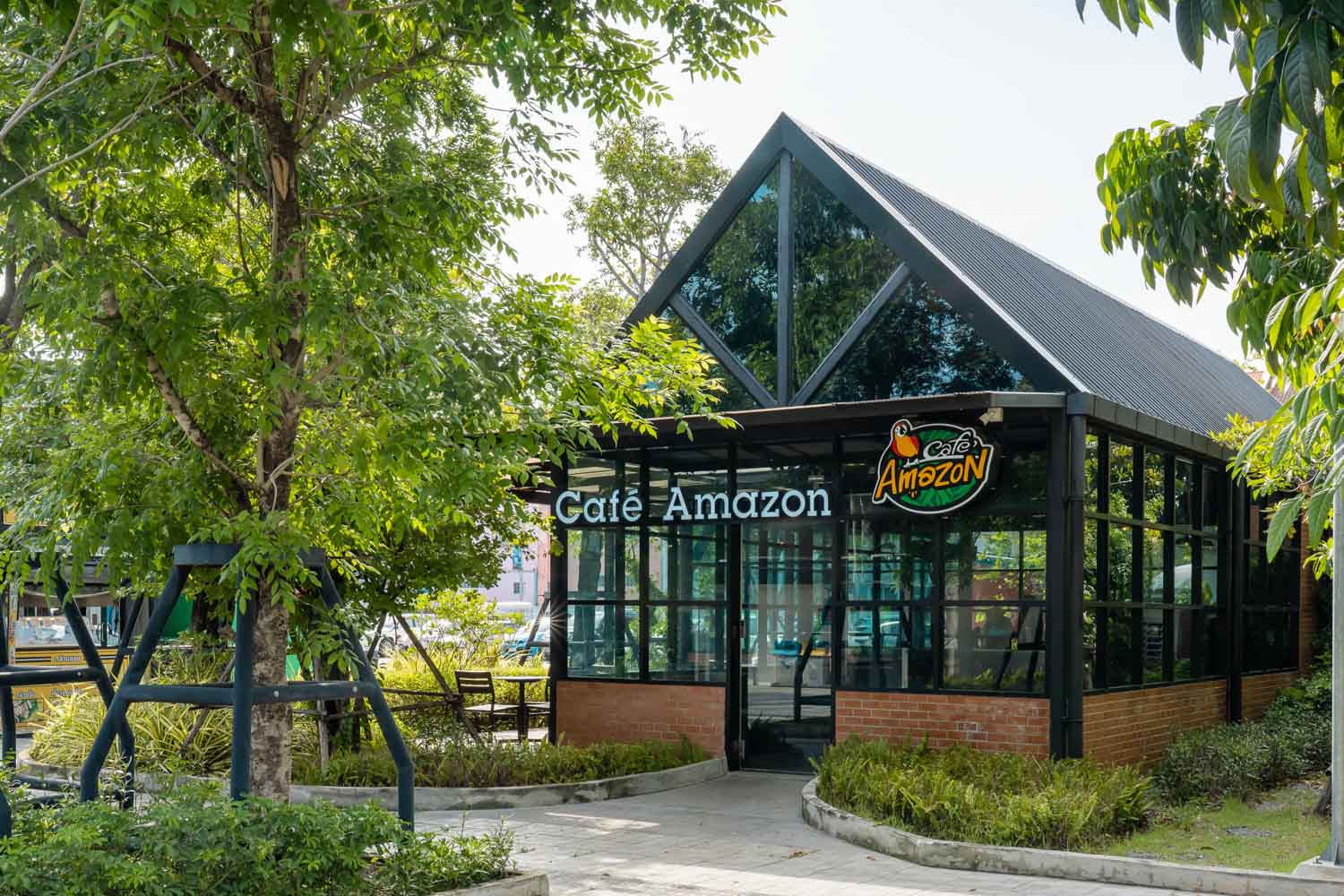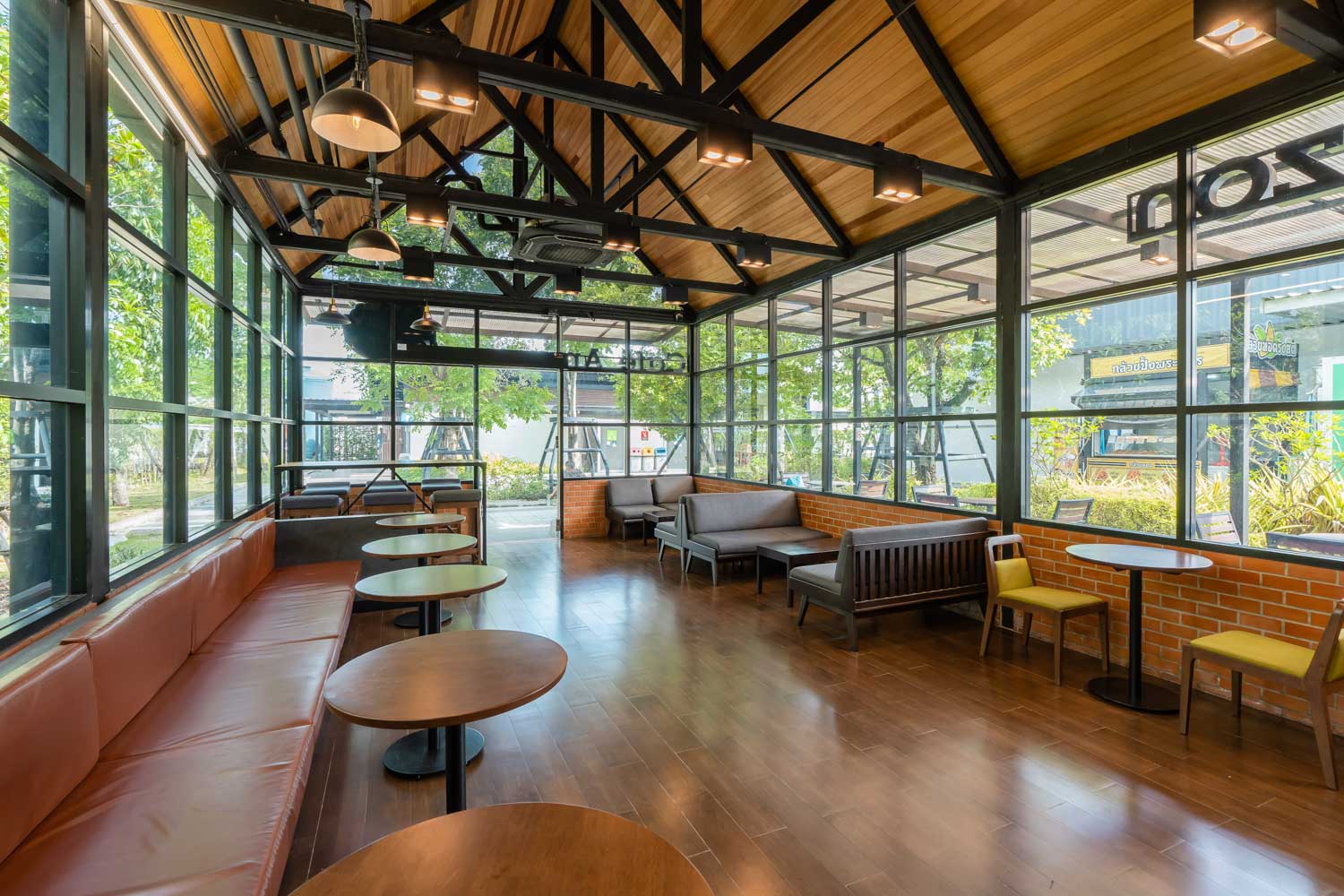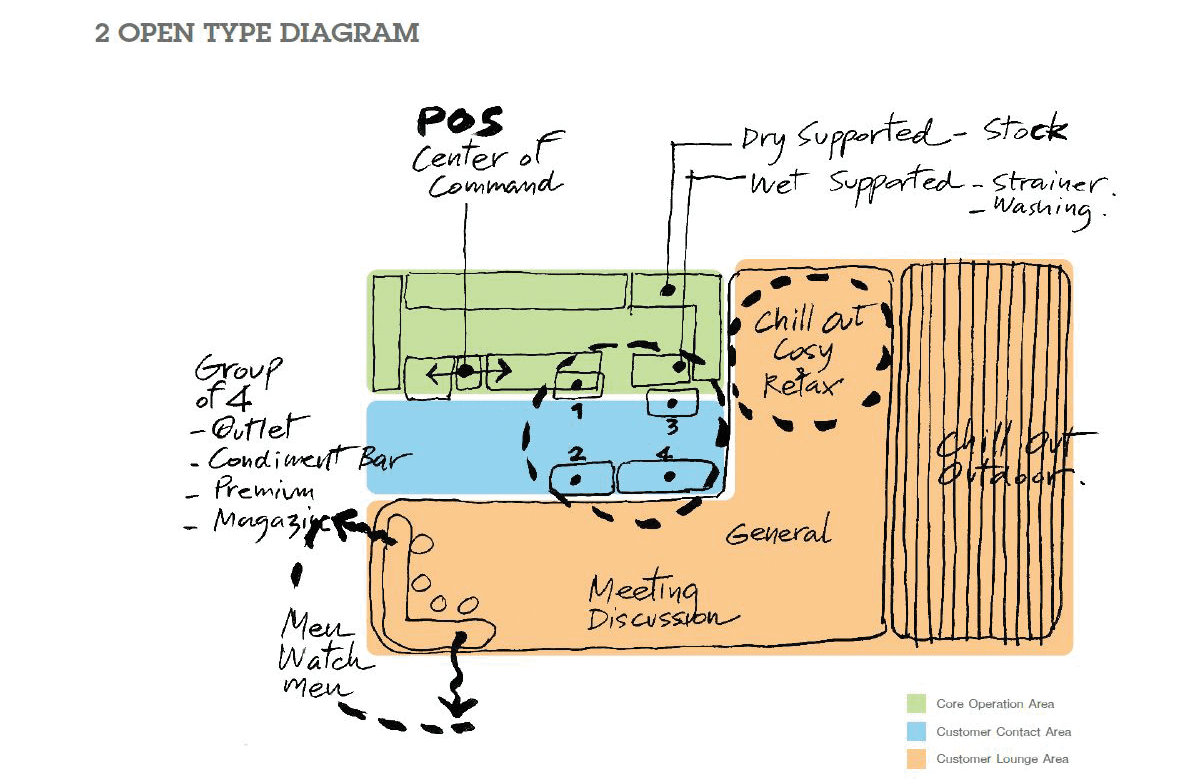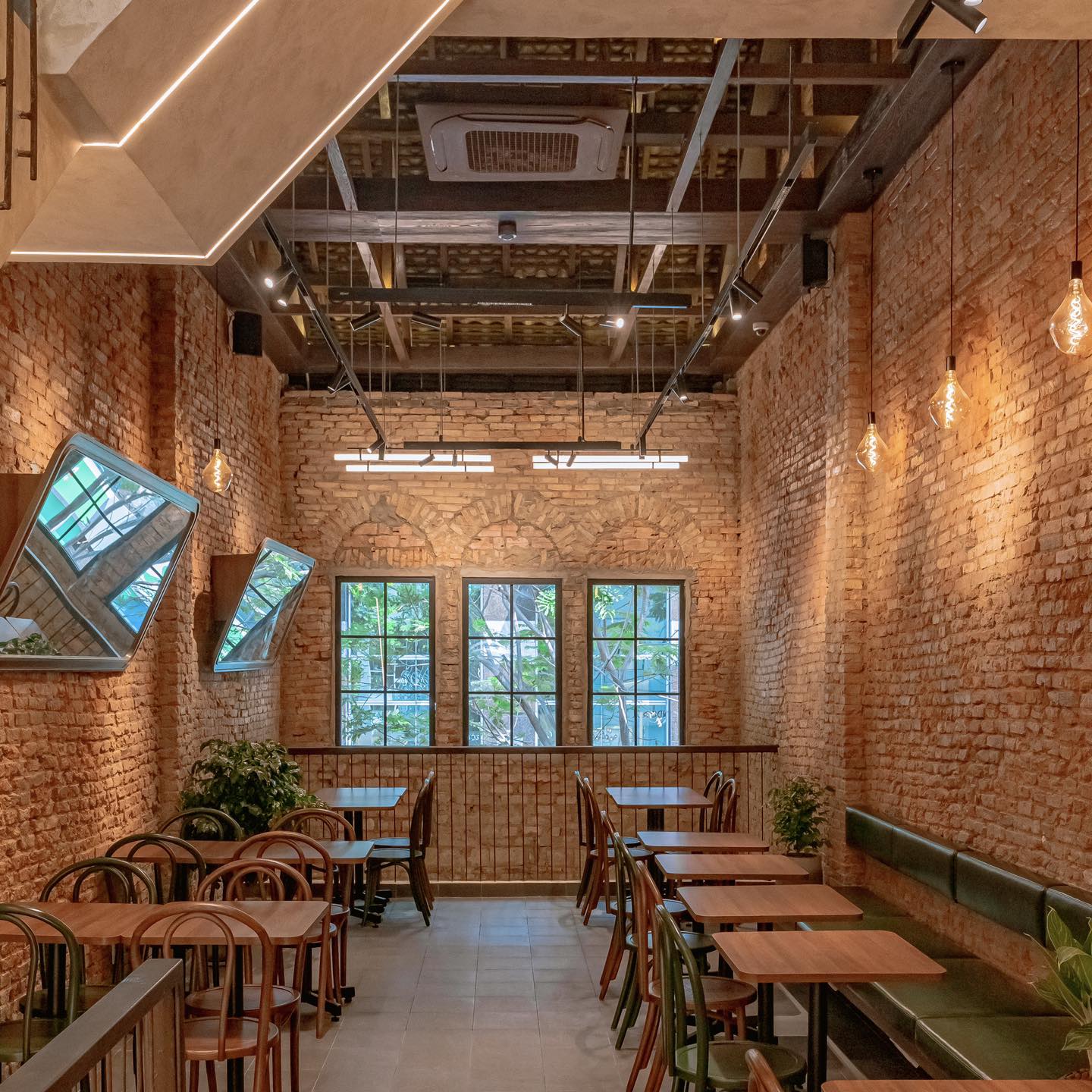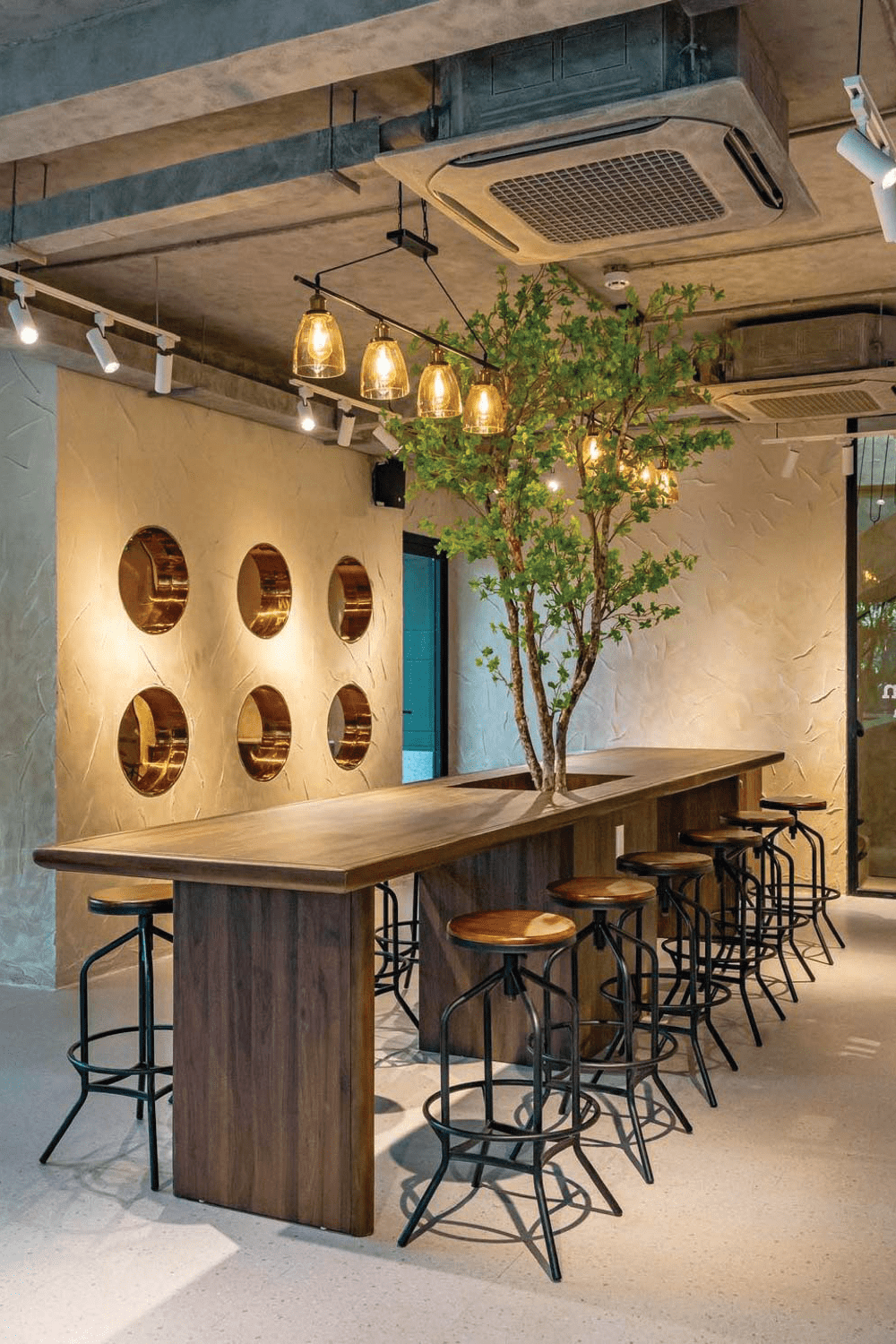INTRODUCING THE OTHER ‘TASTE’ OF CAFÉ AMAZON ASIDE FROM A CUP OF DRINKS BUT DESIGNS. GETTING TO KNOW THE ‘TASTE OF NATURE’ CONCEPT THAT UNIFIES THE DESIGN OF ALL STORES
TEXT: PRATCHAYAPOL LERTWICHA
PHOTO COURTESY OF CAFÉ AMAZON
(For Thai, press here)
Coffee and cafés have become a form of culture with widespread and thriving popularity. If we were to randomly ask the Thai people to name the names of cafés they know, Café Amazon would probably be at the top of the list. The Thai coffeehouse brand is now a household name with over 3,800 outlets nationwide. art4d explores the story behind Café Amazon’s image as a friendly, neighborhood coffeehouse brand that opens its doors to everyone with its friendly, lively energy and accessibility. The three-episode series delves into ideas and concepts that birthed the designs of extensive physical stores, branding, and the thought process that has made Café Amazon a trusted and beloved establishment among consumers and the 6th largest coffeehouse chain in the world.

The beginning of a legend: Café Amazon, Thailand’s number-one coffeehouse brand
Gas stations in Thailand today are nothing like how they used to be. From being nothing more than a large concrete area where people stopped to fill up their cars with gas or use the restroom before continuing on their journeys, gas stations have evolved into small shopping malls with a variety of facilities to meet the needs of travelers, ranging from restaurants and food kiosks to souvenir shops and convenience stores. All of the gas station companies are trying to attract customers by providing them with a clean, appealing, and safe environment. PTT Station is one of the key components driving the evolution of petrol stations in Thailand. Café Amazon coffeehouse is one of the stores and establishments integrated into the spatial program of a PTT gas station.
The concept of coffeehouse in a gas station arose from observing people’s habits and conditions when driving long distances. According to studies, travelers would look for ways to relieve their weariness after a long drive, and drinking coffee is one of them. The discovery spurred the idea to create a coffeehouse brand for travelers to stop for a nice cup of coffee after a long journey, while also serving as an additional source of business that can generate income for the gas station where it was placed.
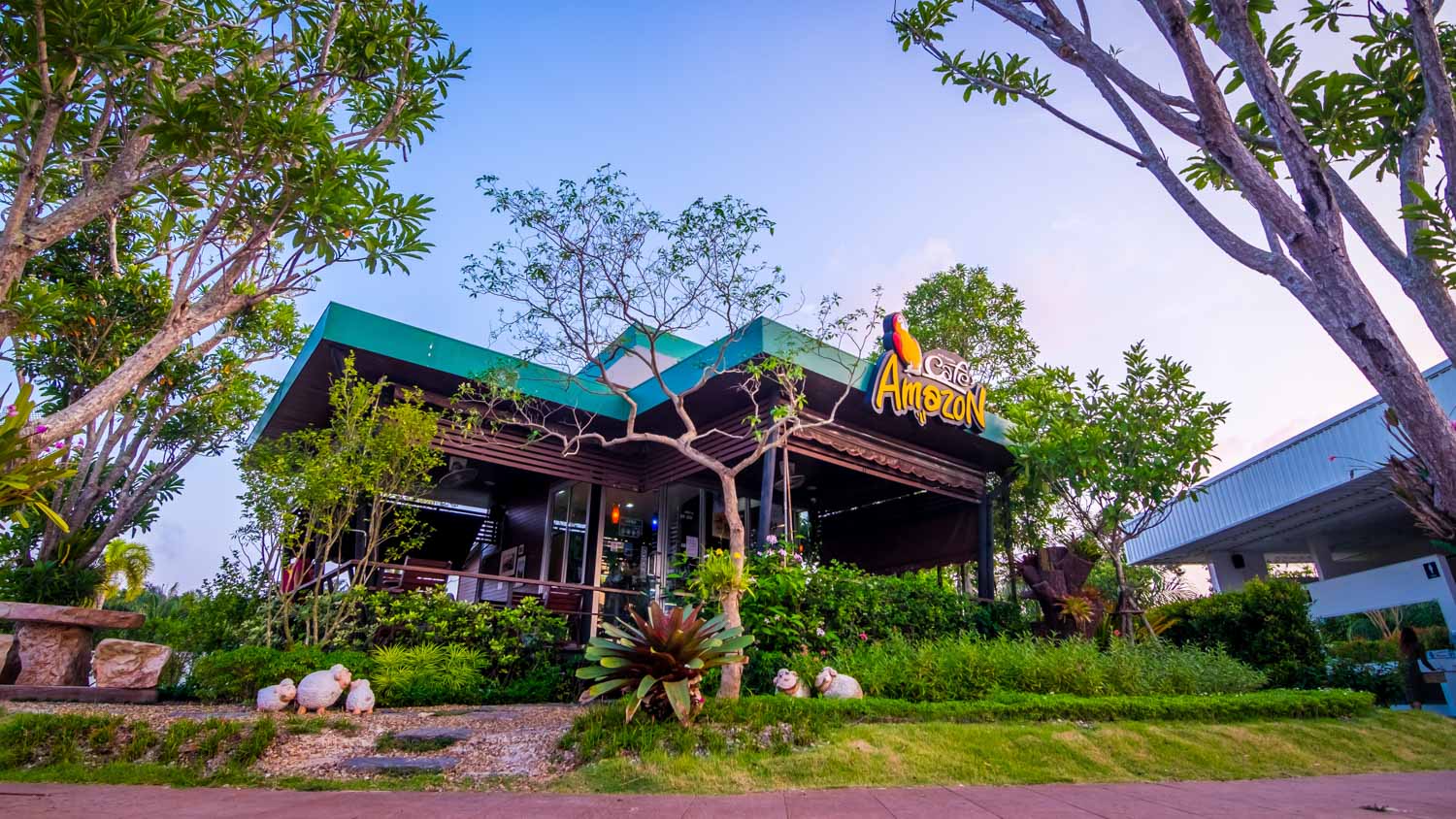
Café Amazon was envisioned as a coffeehouse with a delightful atmosphere, similar to a lush oasis for travelers. Café Amazon is named after the Amazon Forest, which is noted for its rich natural resources and culture. Meanwhile, with around sixty percent of the rainforest located in Brazil, the world’s largest coffee grower, the name Amazon references both the place with a strong coffee culture and the beautiful, lush nature.
Café Amazon opened its first location in 2002 at the Sricharoenphan branch of the PTT gas station on Vibhavadi Rangsit Road. Only a few years later, the brand has seen tremendous growth, with more locations constantly sprouting up across the country.
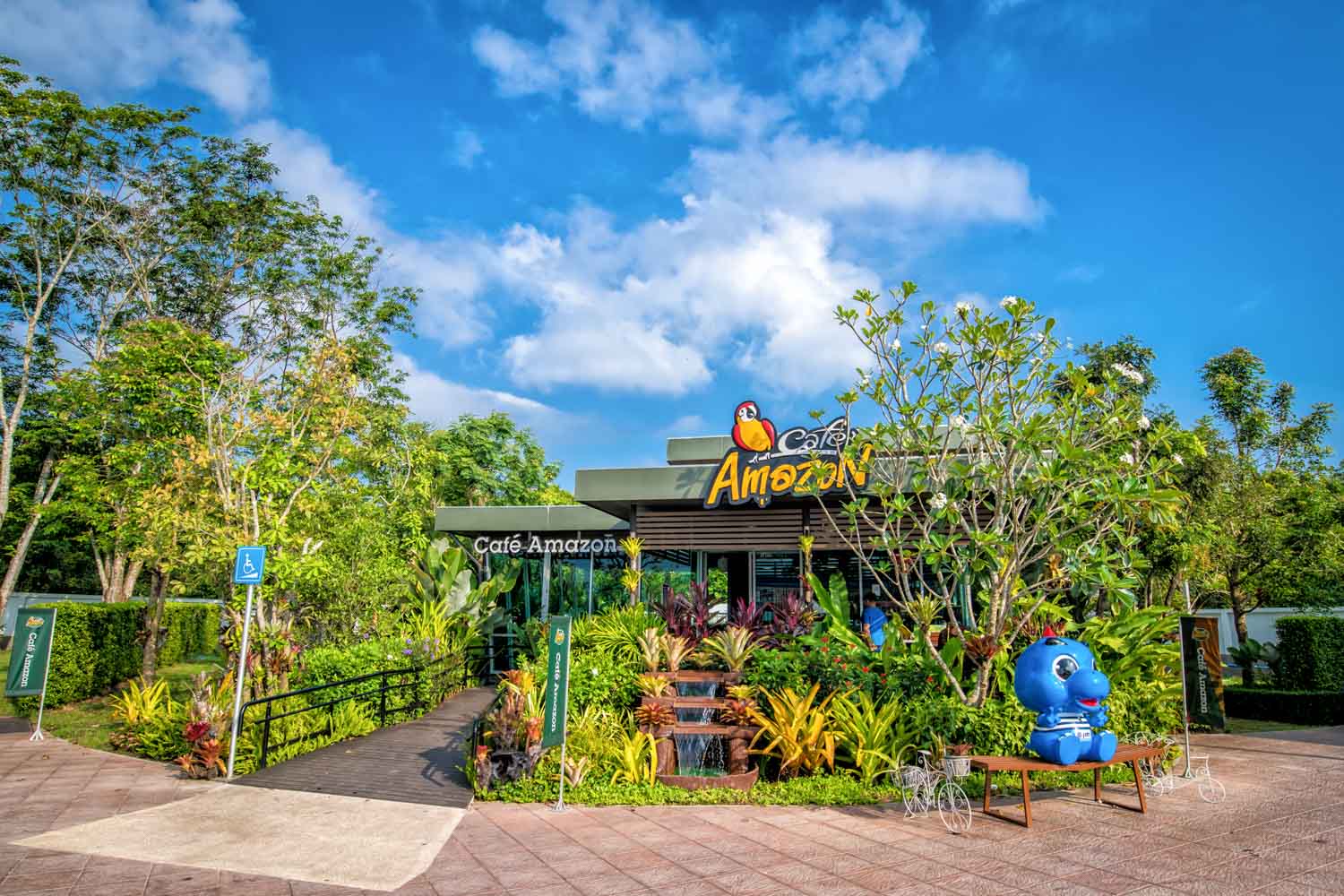
The Café Amazon Blueprint
Since its inception, Café Amazon has developed four different types of physical stores.
1.Kiosk: This format is intended for consumers who are in a rush and want to quickly grab a takeaway order and leave. Café Amazon To Go kiosks can be found at skytrain and subway stations.

2.Standard Store: The majority of Café Amazon branches use this model. The majority of branches opened at petrol stations are in the standard store format, although there has been a continual expansion to commercial buildings or even shopping malls.

3.Concept Store: A Concept Store is distinguished from a normal store by its branch-exclusive products and menus, as well as its unique design.

4.Flagship Store: Currently a work-in-progress project. When finished, the flagship stores will be the largest and most prominent branches of the Café Amazon brand in the future.
While each format and branch has its own distinctive design elements, all Café Amazon outlets are intertwined with the brand’s ‘Taste of Nature’ slogan. This ethos is the origin of the design, which highlights a lush and oasis-like atmosphere where travelers stop by to enjoy the wonderful taste of Café Amazon coffee. It coincides with the brand’s image as someone with an adventurous spirit who is kind, approachable, and concerned about the environment. These characteristics are integral aspects of every coffeehouse under the Café Amazon brand.

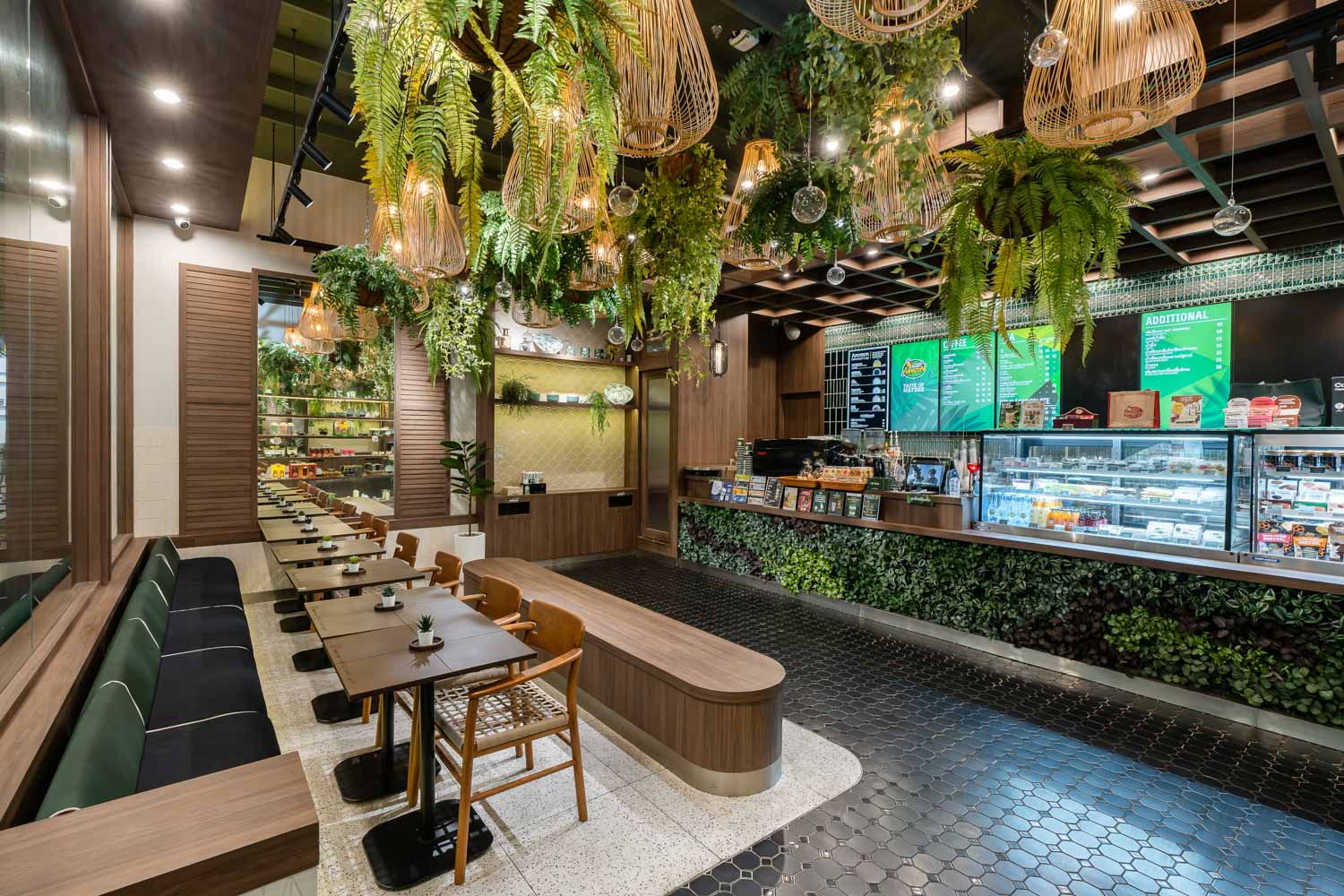
The designs of all Café Amazon branches, particularly the standard stores, share certain features, such as the use of black steel materials, exposed steel ceilings, brick walls, or exposed concrete walls. These attributes have been incorporated into the designs to evoke the industrial characteristics of a coffee roasting factory, with wood being used to soften the rawness of the industrial materials with its warmth, while trees and plants help bring the elements of nature to the forefront.
With every format of a Café Amazon store, the functional program is divided into three zones. The Core Operation Area is where the staff prepares the drinks, takes orders, and expedites them. This area is also where the ingredients are stored. Meanwhile, the Customer Contact Area is designed to facilitate interactions between baristas and customers. It also displays premium merchandise, baked goods, and coffee products for interested customers to browse and purchase.
The Customer Lounge Area houses the seating spaces where guests can relax while enjoying their drinks. The seating arrangements and furnishings are modified to accommodate a wide range of users, including those who come alone, in groups, or wish to spend an extended period of time chilling or working in the space. The three zones have no set format or size and can be expanded, scaled down, and altered to suit the conditions or requirements of each branch and its concept.
The standard store format also contains a number of architectural characteristics and elements, such as a pavilion structure with an indoor, air-conditioned area and an outdoor patio. The provided options derive from the study of customers’ behaviors, which include their preferences to sit outside of an air-conditioned room and enjoy the beautifully designed, lush landscape surrounding the coffeehouse. The gable-roofed structure is currently the most popular design among the new Café Amazon branches due to its comparatively easier construction process and the delightful ambiance of being inside of a glass house, which offers access to the view of the surrounding green space—an ideal space for one to rest after a long drive.
Because of the brand’s explosive growth and number of branches, developing standard formats is critical for a more efficient and speedier design and construction process. The decision on which format would best suit a new branch is based on the behaviors of prospective customers, the size of the land, and its investment worthiness.
Flying Out into Foreign Lands
Café Amazon is expanding its brand and physical stores to foreign markets, including Southeast Asian countries such as Laos, Myanmar, Cambodia, Malaysia, Vietnam, and the Philippines. They are also targeting markets in China, Japan, Oman, and Saudi Arabia, currently including 10 countries in their expansion plan.
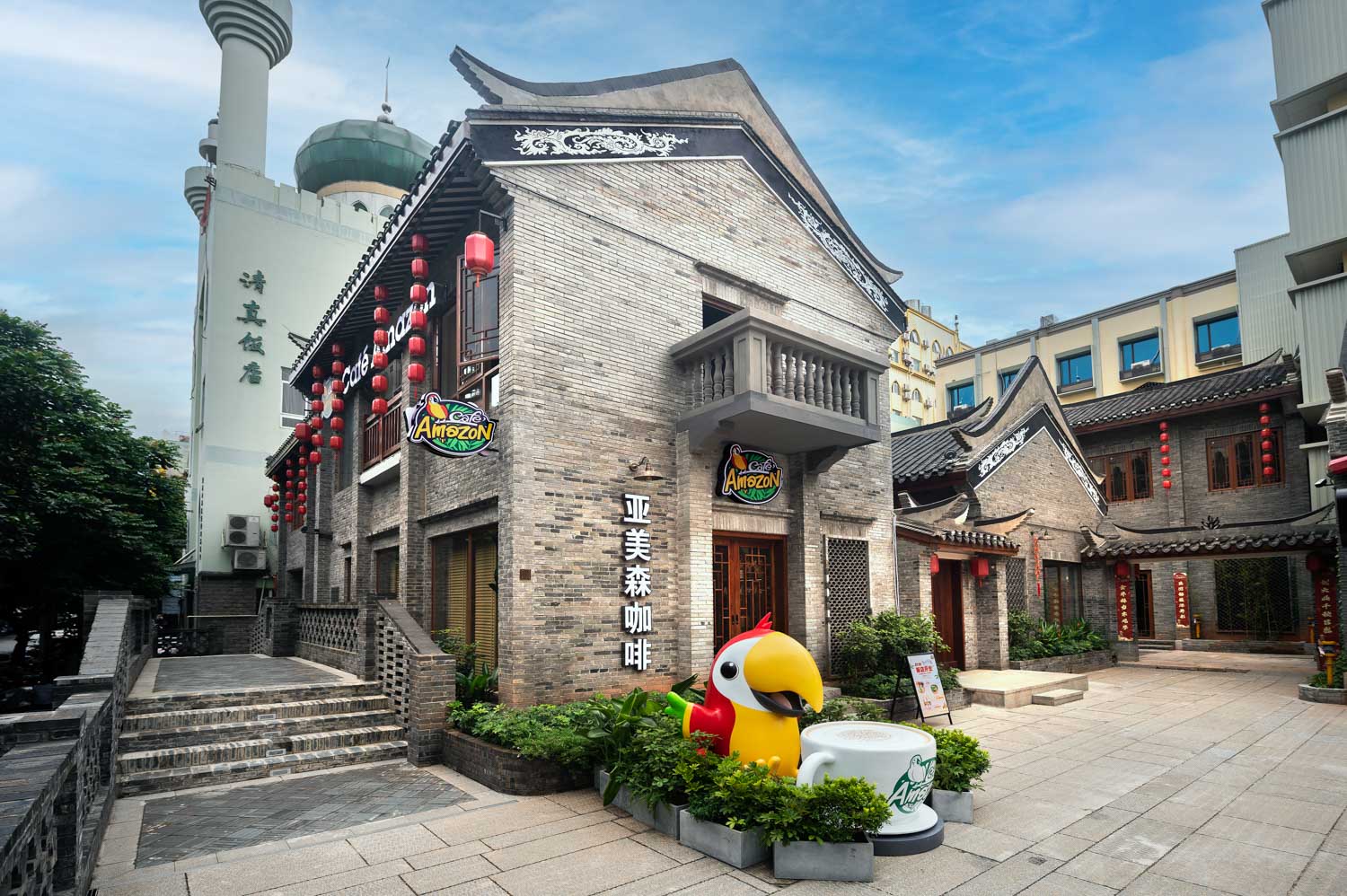
Café Amazon Sān jiē liǎng xiàng in China
In order to expand abroad, the brand is required to adapt to cater to the locals. This means special drinks that are not available in Thailand and the store’s design.
One example is the branch located in Vietnam. The limited space on the site and the preference of Vietnamese people to work in coffeehouses instead of working from home contribute to its design. Unlike in Thailand, where lounge chairs are used for customers to relax and lounge, the Vietnam branch uses tables and chairs that can accommodate people’s sitting postures while working at a desk. Despite the different conditions, Café Amazon’s overseas branches continue to embody the ‘Taste of Nature’ philosophy through their interior design. They incorporate green elements from trees and plants as well as natural materials such as wood and bricks, including the use of green color tones. The design incorporates all of these elements in order to create a friendly and natural atmosphere that aligns with the brand’s philosophy and identity.
A lot of times, overseas branches opt for a different approach when it comes to the matter of design language. Instead of embracing modern aesthetics, they prefer the design that integrates the functional spaces of a coffeehouse into old buildings, combining the grammatical characteristics of vernacular architecture. This approach not only creates a branch with a unique design that respects the local culture and fits in with its surroundings, but it also has the potential to attract local customers who are interested in the locally inspired design, encouraging them to visit the store.
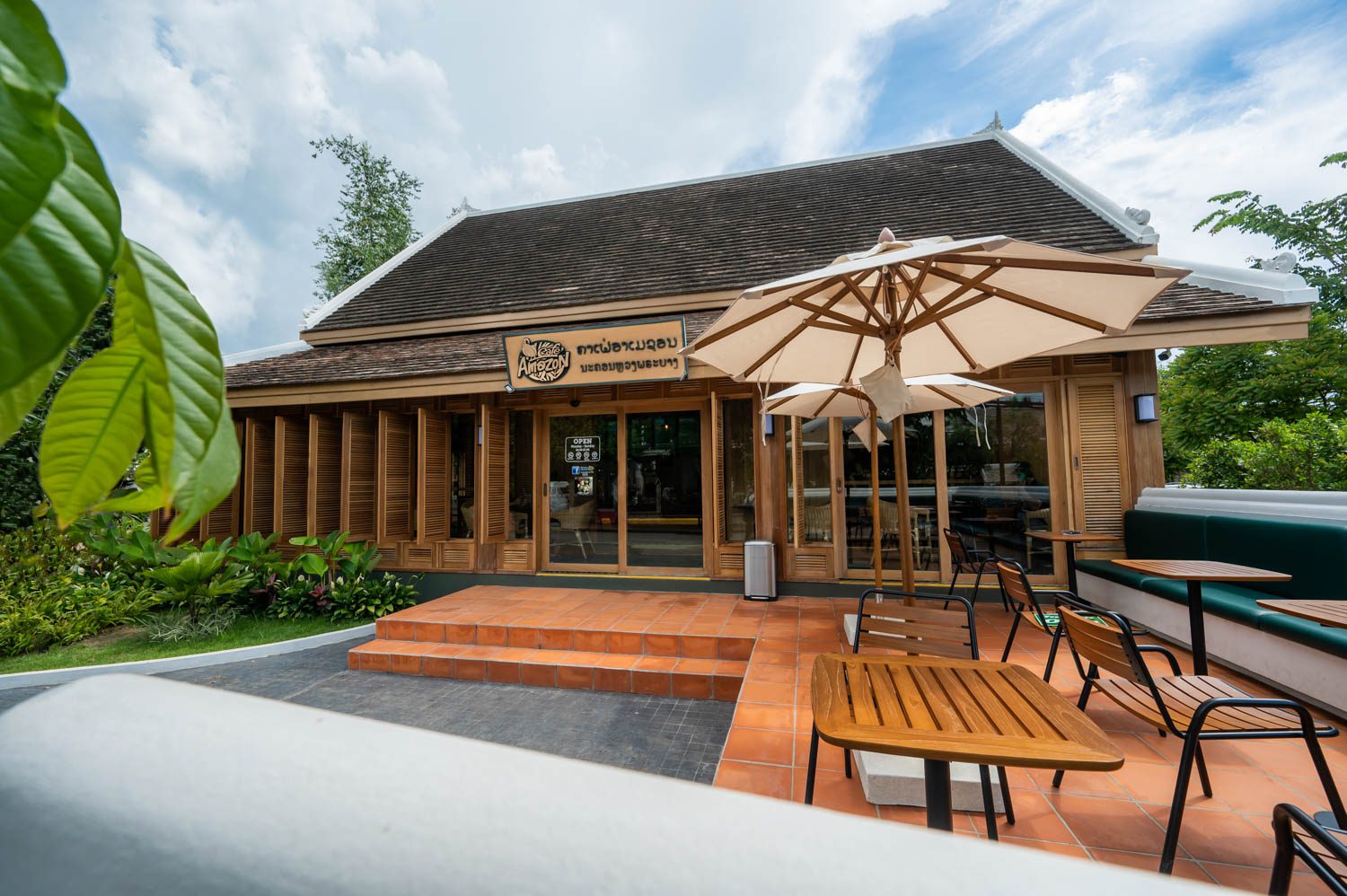
Café Amazon Luang Prabang in Laos
In the upcoming episode, we will delve into the construction techniques that have contributed to the remarkable expansion of Café Amazon stores and explore the innovative construction methods that have been developed to create many new, incredible spaces and establishments under the Café Amazon brand.


